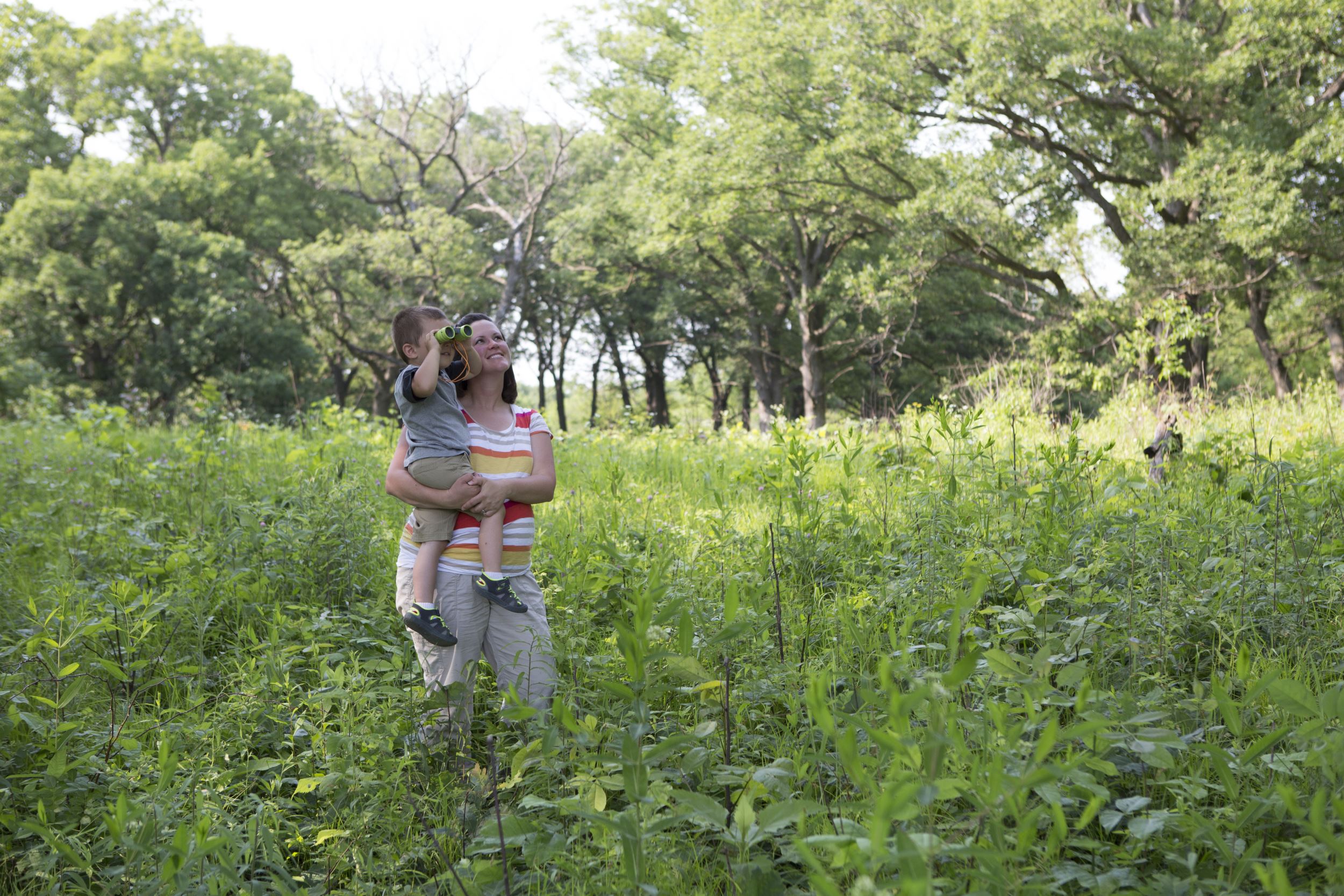Acorn Crew
Posted on May 26, 2023 in Blog
Acorn Crew: Birding with kids

The Acorn Crew is INHF's initiative to get children and families outdoors. Through the Acorn Crew you can find self-guided activities for you and your family, tips for exploring nature and other resources to enjoy while outdoors together.
Birding can be an accessible activity for many ages and abilities. Close-up views of even the most common birds can still fascinate the viewer. And since you can bird from just about anywhere and anytime of year, it’s a great skill to nurture.
Tips for birding with children
Children are born scientists who are naturally curious, and birds are a great way to get them outdoors and making observations. Our Birding for Beginners blog post offers general birding tips for all ages, but here are few things to keep in mind when birding with children.
Spark their curiosity
Before you start birdwatching, try introducing the topic with a book (this is a great list of book ideas to get you started from the New York Public Library) or activity about birds or making observations about the birds around you. The Cornell Lab of Ornithology has a fun list of bird related activities you could start with. You could even set out to find a specific bird and talk or learn about it beforehand.
Make birding accessible
Set your expectations for what you’ll be doing and what you might see (or hear). You may want to know what birds you could see at given time of year. Des Moines Audubon has a birding-by-month resource that’s great to visit before you go birding.
Next, make sure the location or activity you choose to do will be accessible for the age of children you’re engaging. Older kids can find success birding on a walk or hike; younger birders might have more success finding birds by visiting a bird blind or watching birds at feeders.
One of the first things you’ll learn when birding with children is that it can be hard for everyone to see the same bird, especially when perched in a tree or in the prairie. Be descriptive when pointing out the location of a bird. Saying the bird is on a branch in the tree might not be as helpful as saying the bird is on the tip of that really thin branch in the tree with small leaves.
Engage their senses
Most importantly, remember that children respond when their senses are engaged. While birdwatching, seek to go beyond general bird identification. Ask questions about and describe the color, shape and size of what you see. A Crow and a Red-winged Blackbird sure have a lot differences when you really look at them! Take a close look at their body parts. What’s different about beaks, wings, eyes and feet? These observations will help make bigger connections between the birds and habitat, food and behavior. You might notice the large beak of a Northern Cardinal helps the bird eat large seeds like sunflowers whereas a small beak like that of an American Goldfinch lends preference to small thistle seeds.
And don’t forget to listen for birds too. Children will love learning their calls; even my two-year-old twins know a Barred Owl call. You can download free apps like the Merlin Bird ID by the Cornell Lab or purchase a device like this Bird Song Pocket Identifier.
A note on binoculars: Binoculars can be great, especially for older kids, but for some younger children they can be a distraction. Don’t feel pressure to get a pair right away. Birding without binoculars is perfectly satisfying, too. Once a child shows interest in birds or nature, you may want to invest in a pair.
Find community with other birders
Lastly, if your birding adventure is a success and you have a budding young birder, you may want to find other opportunities to learn about birds. Check out Iowa Young Birders (IYB), a non-profit organization that encourages youth to study and enjoy birds and birding. IYB offers regular programming around the state, including their upcoming Summer Birding Kick-off on June 3 in Ames.
Bird blinds and other up-close viewing opportunities
There are opportunities around the state to view birds up-close through blinds, viewing platforms or live feeds. Here are a few you might want to check-out:
- Northern Iowa:
- Central Iowa:
- Eastern Iowa:
- F.W. Kent Park, Johnson County
- Have a handicap accessible bird blind near the Conservation Education Center
- Host annual bird banding public events typically in the spring and fall migration windows (May and September)
- Iowa Raptor Project, Johnson County
- Wickiup Hill Learning Center, Linn County
- Bird viewing area
- Host annual bird banding public events typically in the spring and fall migration windows (May and September)
- Western Iowa:
- Hitchcock Nature Center
- Includes an observation tower where you can see raptors in large numbers. Best viewing is September through December
- Southern Iowa:
For other birding locations, visit https://birdinghotspots.org/us/iowa to find a birding hotspot near you. Through a partnership, the Iowa DNR, Iowa Ornithologists Union and Iowa Audubon have identified over 1,500 areas around the state that are hotspots for birding.